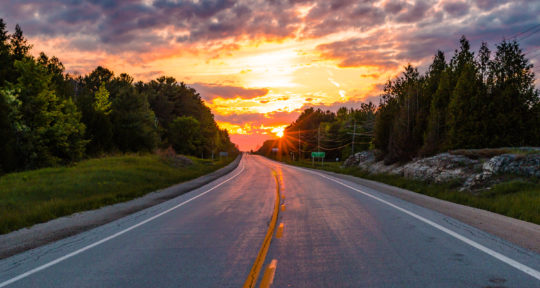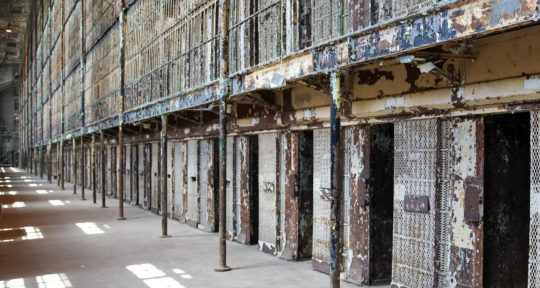They’ve been standing guard along back roads, in front of car dealerships, and atop restaurants for decades. They’ve been subjected to target practice, kidnapped by college students, and used as unofficial mile markers for military planes. They’ve been transformed into pirates, flag-waving patriots, and amusement-park bogeymen. One even foreshadowed the resurgence of Wonder Woman, 10 years before her Gal Gadot-led reboot raked in millions on the silver screen.
Nearly 75 years after the Muffler Men first rose, with a mighty squeak, from their International Fiberglass molds, they still serve as inspiration for travelers like me. And while the largest density of Muffler Men is in the South, the Northeast’s 30 roadside goliaths have arguably had more fun.
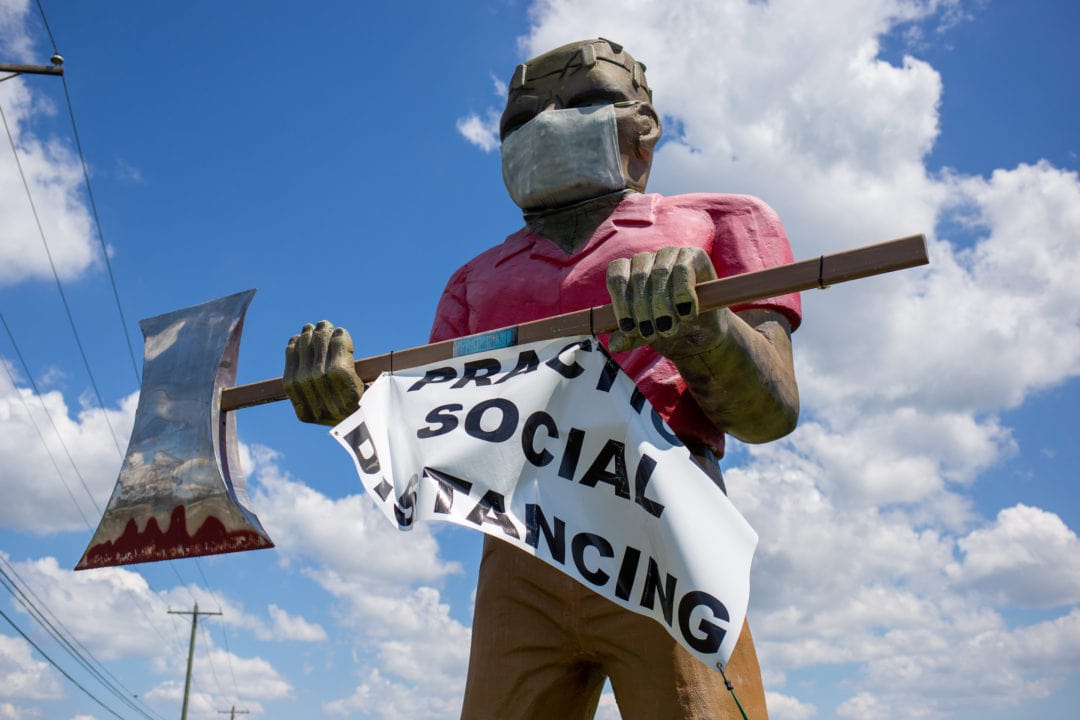
My romance with the fiberglass figures began early. As a child growing up in Rhode Island, I was smitten with an Alfred E. Neumann look-alike (this style was originally called “Mortimer Snerd” but now is sometimes referred to as a “Happy Halfwit”) who grinned down on the mini-golf course at Rocky Point amusement park. On most visits, I begged my parents to let me ride the Skyliner, a chair lift that glided over the park, just so I could gaze upon his freckled, jug-eared visage. I was sure his eyes, which seemed to follow me, returned my ardor.
According to Joel Baker, founder of American Giants, the Northeast’s large number of amusement parks (many of which are now defunct) is a primary reason why a cluster of Muffler Men ended up here. “Muffler Men, Vikings, A&W Root Beer families, a host of animals—horses and bears and giraffes and all kinds of big stuff—all gravitated to these amusement parks,” Baker says.
As the parks went dark one by one, their giants were auctioned off to other parks and private collectors. Such was the case, I suspect, for my beloved Halfwit, who was removed in 1988 to make way for a Freefall ride. Rocky Point shut down six years later, and his trail went cold.
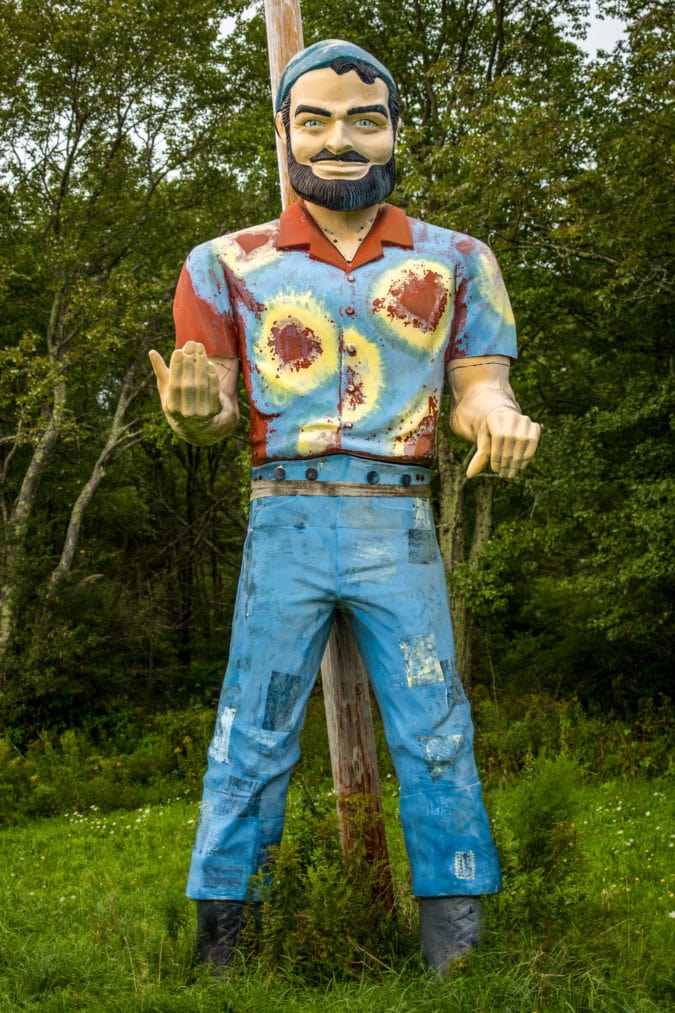
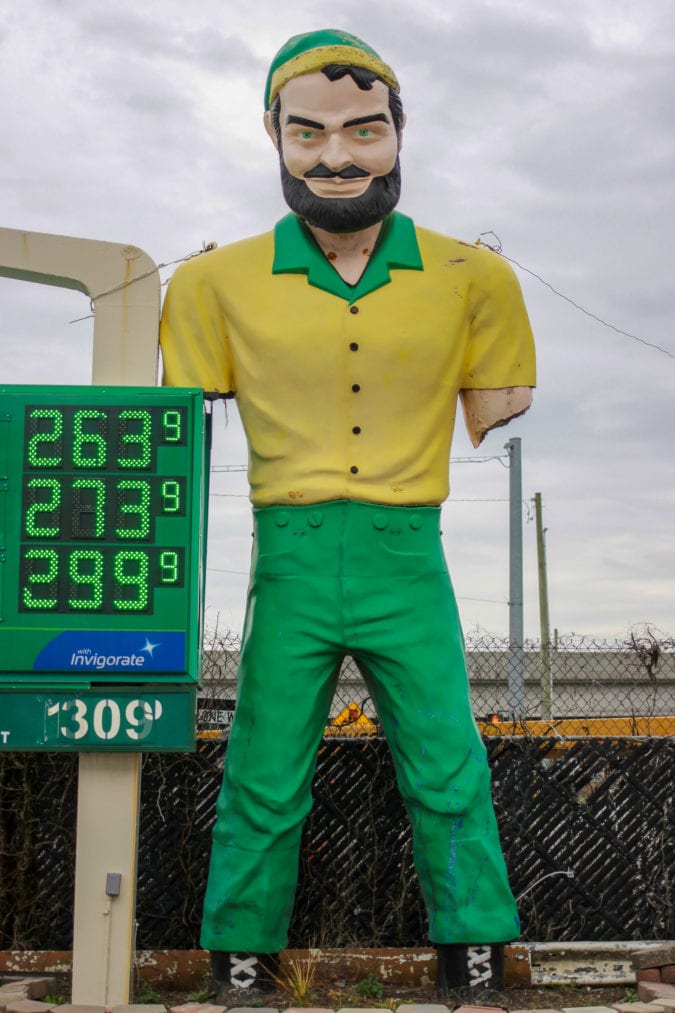
Top hats and Texaco
Muffler Men began their run in the 1960s with large companies like Texaco. “The concentration seemed to be heavier in the Northeast, with ads running in the paper saying, ‘Hey, come to [our] Texaco station or Phillips 66 station this weekend. You’ll find a 20-foot-tall cowboy. And if you guess the weight of the cowboy, you’ll win a prize,’” Baker says.
When their heyday ended, some of these giants dispersed to other states. Others languished in overstuffed garages and storage units for decades. They’ve begun resurfacing recently, especially in Massachusetts, where, Baker believes, now-adult children and grandchildren clean out their family sheds and find a supersize surprise.
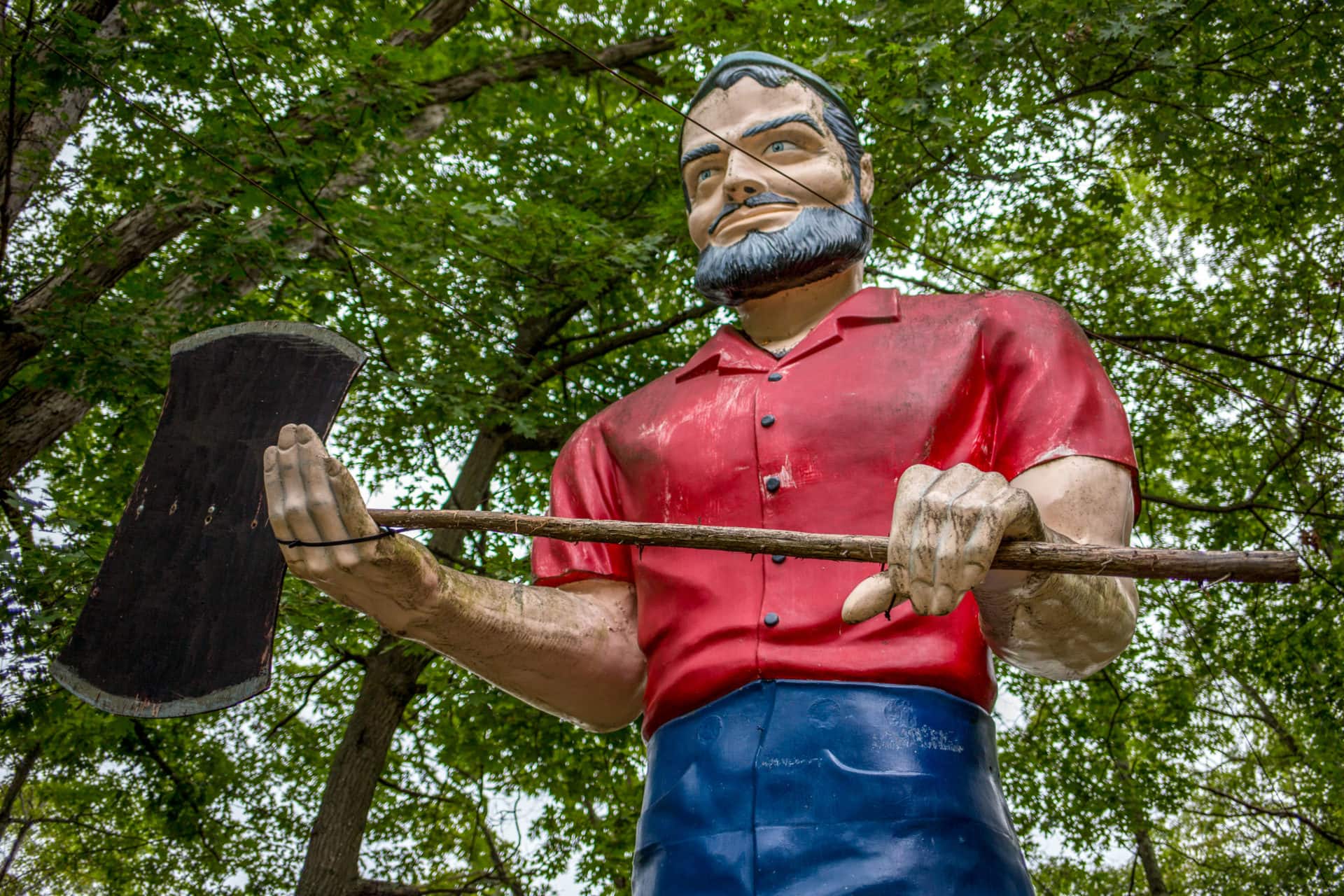
My close encounter of the Snerd kind ignited my search for other larger-than-life partners along the road—like Southern Man, a top-hatted Texaco Big Friend. Dressed in head-to-toe white, he once welcomed travelers off the Massachusetts Turnpike to the gratefully departed Plantation Inn in Chicopee. A Muffler Man of many talents, he’d previously been an Uncle Sam at a car dealership and a pie-slinging chef for a local pizzeria. Rumor has it that Air Force planes used him as a visual marker while landing at nearby Westover Reserve Air Base. This was all before he vanished, leaving me (and countless other New Englanders) forlorn, in the spring of 2017.
Big Man
A stoic Native American Muffler Man once guarded the entrance to Benson’s Wild Animal Farm in Hudson, New Hampshire. When the park closed, he was relocated just over the border to Shirley, Massachusetts, where he held court over a nightclub and, later, a used-car dealership. In the 1990s, perhaps having given up on life in a sandy, weather-beaten parking lot, he toppled over. His arm was promptly pilfered by local high school students. (Pranks with the giants are especially common in the Northeast, according to Baker.) He eventually received a replacement arm, and a sturdier base.
When I moved to the upper Hudson Valley, on the border of the Berkshires in Western Massachusetts, I found a new hunka-hunka sunburned love. Known locally as “Big Man” or the “Green Valley Giant,” he stands outside a former farm-equipment store, on a rural road close to Jiminy Peak Mountain Resort, just 10 minutes from my home.
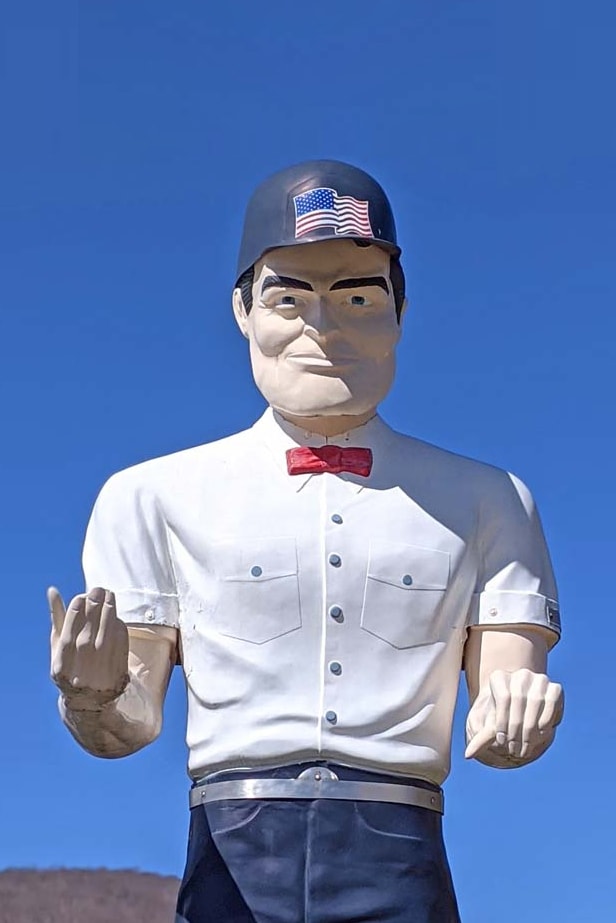
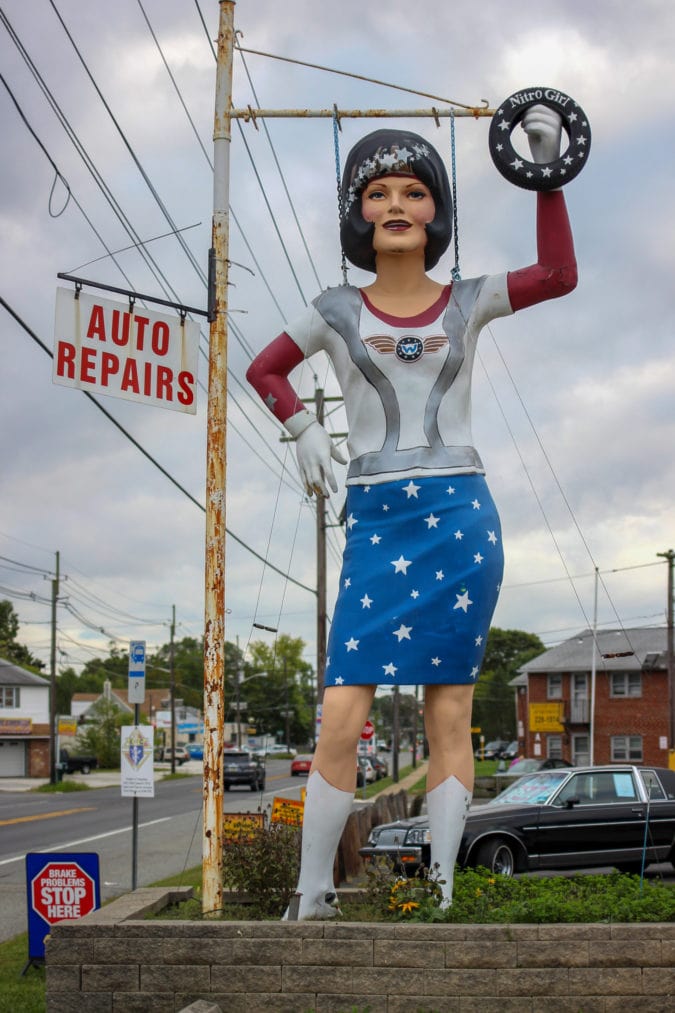
Christine Noble-Drosehn, a music teacher who has lived in the Berkshires her entire life, says she remembers Big Man vividly. Her father frequented the store for tractor parts, and she’d tag along to say hello to the giant. He was repainted by a local artist in 2017, but no longer holds the pitchfork that Noble-Drosehn remembers. “It looked more like a fork than a pitchfork,” she says.
Big Man might be stationary, but he’s not bored: He’s been used for target practice and was once spirited away in the night by college students. He’s even spent some time at a nudist camp up the road (Muffler Men come out of the mold fully clothed). Though the Whitmans have long since retired and closed up shop, Big Man—blue cap, red bowtie, silver belt, and all—still stares out at the Berkshire hills with an enigmatic smirk.
Lumberjacks and Vikings
In search of more tall, silent, and sometimes shiny men, I go to the place we all go in search of deep truths and interpersonal connection: the internet, where I’ve mapped out scores of Northeastern Muffler Men and their brethren, from lumberjacks to carpet-shilling Vikings and creatures of the night.
I make a special detour in the Catskills to stand between the patchwork-jeans-clad ankles of the tie-dyed, beanie-sporting Hippie, a strapping specimen imported from a rooftop in Albany. Originally styled as a Paul Bunyan, he likely spent time at Connecticut’s Danbury Fair, a combination carnival and agricultural exhibition, before getting in touch with his kumbaya side at Bethel Woods Center for the Arts, near the site of the legendary Woodstock music festival.
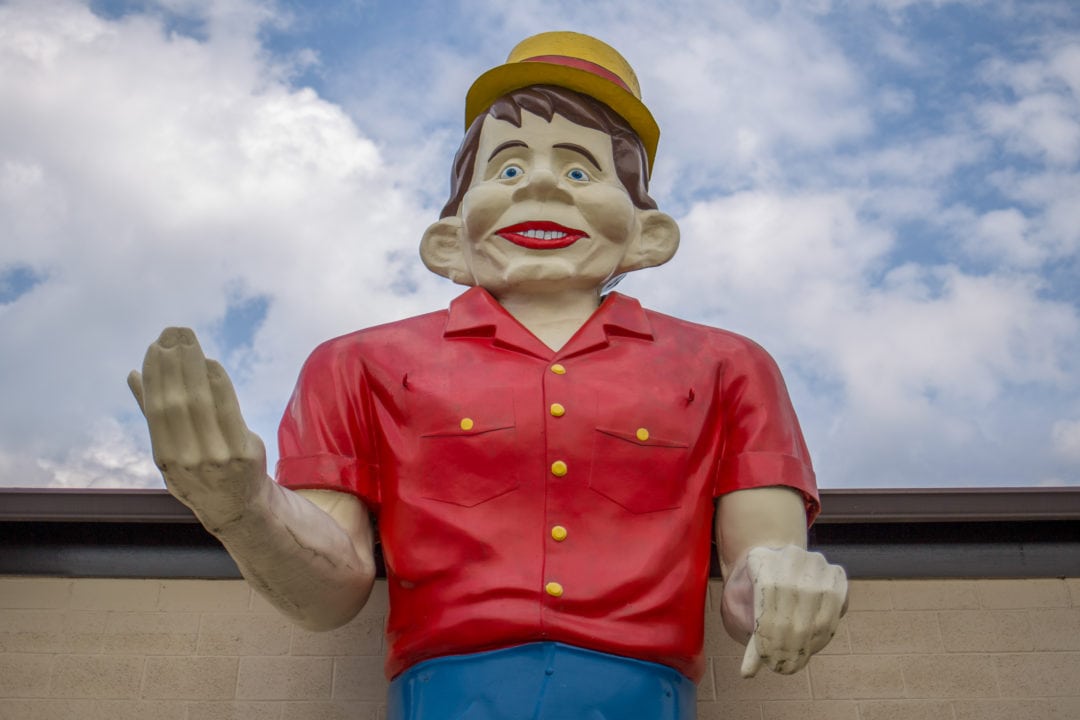
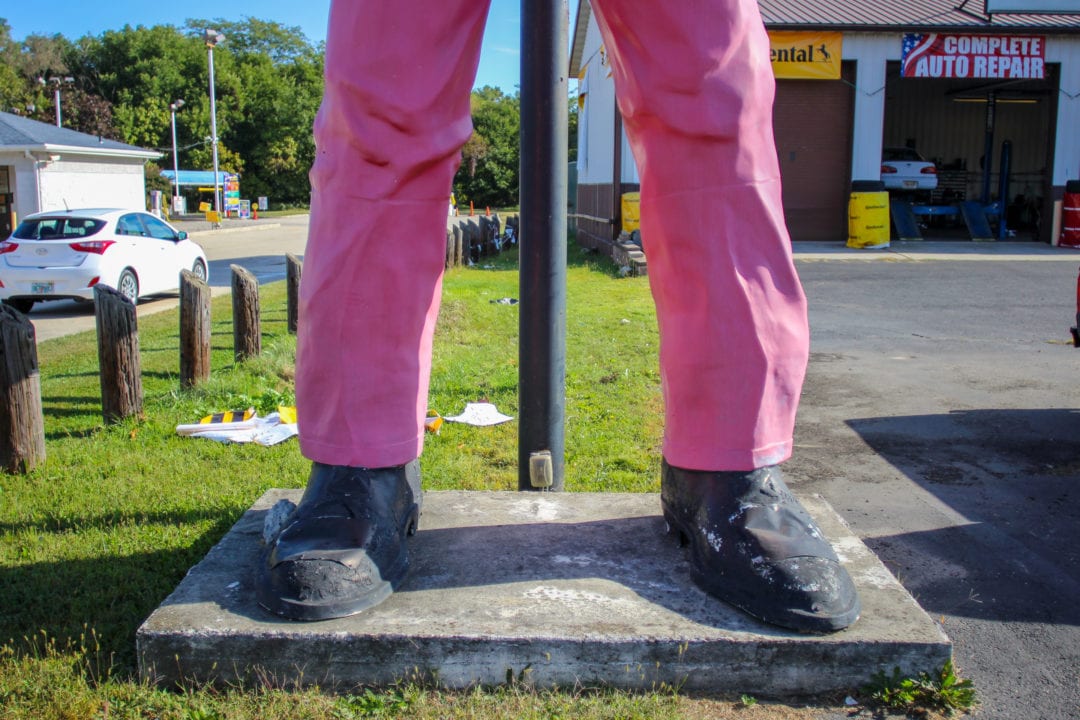
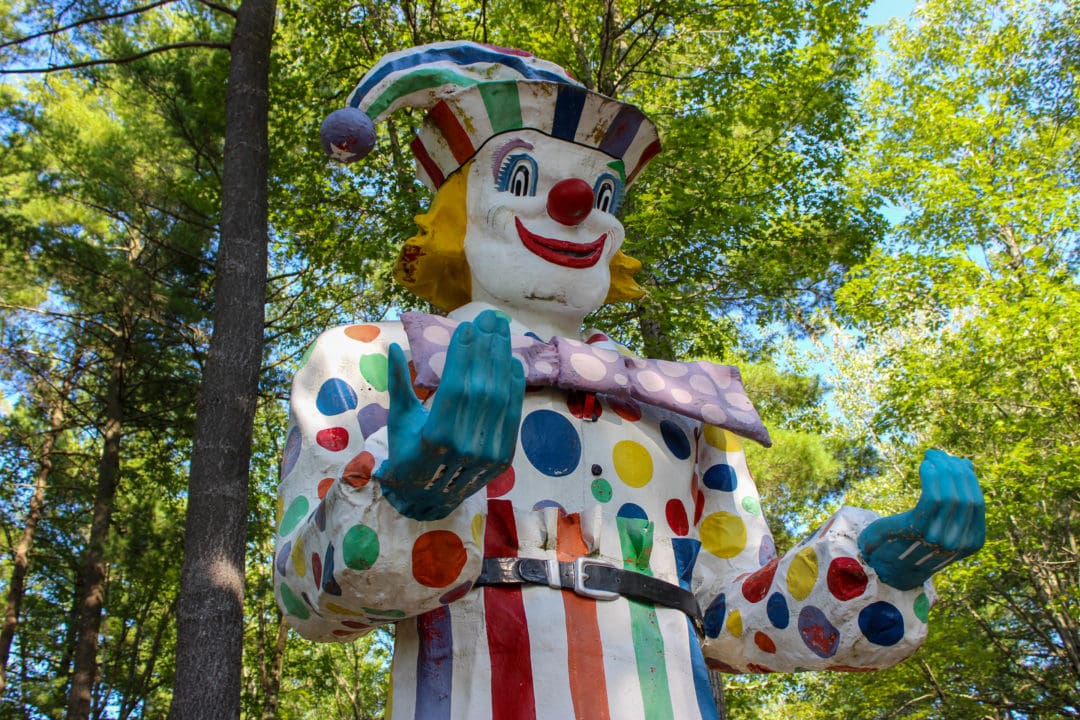
This year, I’ve got a whole new Muffler Man agenda. I plan to visit Nitro Girl, a New Jersey Uniroyal Gal (Uniroyal Tires’ female answer to the Muffler Men). Though she’s always resided at Werbany Tire Town, she ditched her original bikini first for a Jackie O-style skirt set, and later for full-on superhero duds, including tall white boots and a sleek, flight-ready suit. She still retains her impeccably flipped brunette pageboy, now decorated with a star-studded headband.
I’m also planning to roadtrip to the Jolly Roger Amusement Park in Ocean City, Maryland, to see the Buccaneer. A fashion plate to rival Nitro Girl, he has changed costumes at least three times, and has been spotted with and without his favorite accessory, a curved-blade cutlass.
Stay a while
And then there are the monsters. I’m haunted by the disembodied head with yellow eyes and a widow’s peak who dares me to try the Dracula’s Domain haunted hayride in Jackson, New Jersey. Vickie Vinciguerra, whose parents, Mary Ann and Tony, run the attraction, says that her father admired the giants so much, he purchased multiples: three heads and a Snerd, whom they’ve dubbed Mamoo, or “big lug” in Italian.
Though provenance, as they say in the fine-art world, can be difficult to trace, Vinciguerra believes all four came from casino auctions on the Atlantic City boardwalk in the 1970s. “He just liked them,” she says of her father’s spontaneous purchase. “He didn’t have specific plans at first, but knew they could be used for something.”
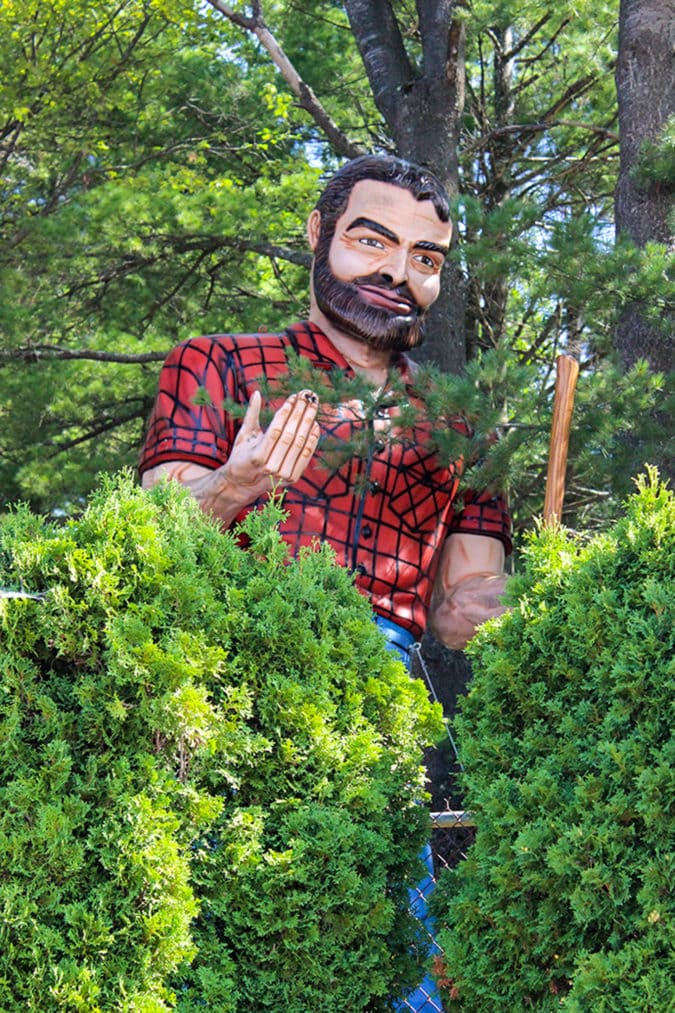
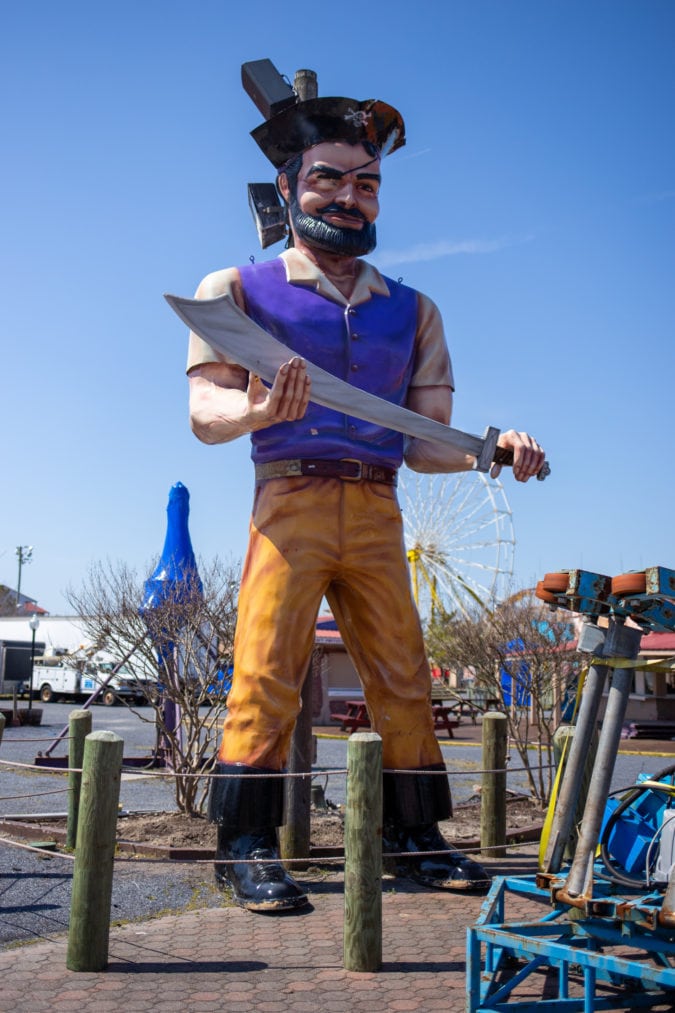
My final stop will be Middletown, Delaware, to visit Frank, the bloody-ax-wielding “scream park” mascot of Frightland. Though he looks vintage, he’s actually new, lovingly recreated from historic photos. A “Frightland twist on an American icon,” according to marketing manager Kyle McMahon, Frank was built four years ago from carved foam blocks and covered in a special paint that dries to surfboard-level hardness. This flat-topped lady-killer donned a mask and a “Practice social distancing” sign during the COVID-19 pandemic, presumably to keep visitors alive long enough to have a whack at them.
New Muffler Men like Frank have increased in number over the past five years, according to Baker. “Now you have a lot of say over what it looks like, the hand positioning,” he says. “You can really tailor it to [fit] your business or attraction.”
New or old, the Muffler Men of the Northeast beckon travelers from the roadside, waiting to share their secrets. Now every time I pass Big Guy, I slow down, drawn to the quirk of his brow and knowing smile. “Come over,” he seems to say with one hand. “And stay awhile,” suggests the other.

